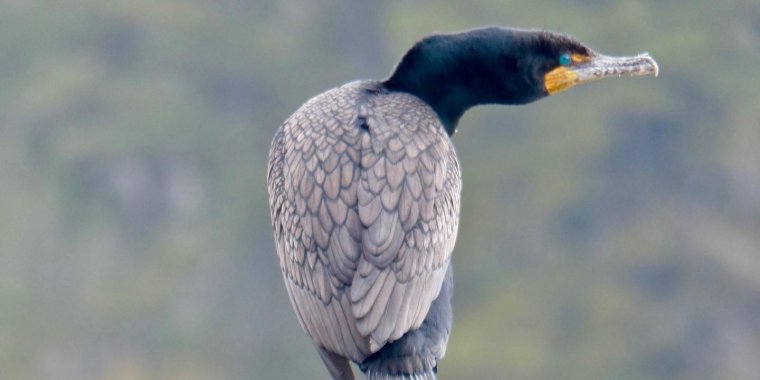| News / Science News |
Study considers sensory impacts of environmental change on ocean species
Studies of how global environmental change is impacting marine organisms have long focused on physiological effects—for example, an oyster’s decreased ability to build or maintain a strong shell in an ocean that is becoming more acidic due to excess levels of carbon dioxide.

Studies reveal that environmental change may lower feeding success in cormorants and other species. Photo: Dave Malmquist/VIMS
More recently, researchers have begun to investigate how different facets of global change can disrupt animal behavior.
Now, a study led by Emily Rivest of the Virginia Institute of Marine Science synthesizes the results of these behavioral studies—revealing both broad patterns and intriguing outliers—and provides a conceptual framework to help guide future research in this emerging field.
"Climate change will significantly impact marine organisms by altering sensory pathways," says Rivest. "This will have consequences for ecological and evolutionary interactions, including mating, predation, and habitat selection."
One of the study's goals was to clarify how human pressures on the environment might impact each step in the sensory pathways between marine organisms.
"Our review," says Rivest, "emphasizes that behavior is the outcome of a sensory pathway that includes the production of information, transmission of that information through the environment, reception of the information by an organism, and then a response—what the organism does with the information." The review also distinguishes between information produced incidentally—what scientists call a cue—and information an organism produces intentionally—a signal.
"Knowing where, and in how many places, climate change breaks that pathway," she adds, "will help us anticipate how it might affect broader ecological processes, like food-web and population dynamics." (National Science Foundation)
YOU MAY ALSO LIKE

